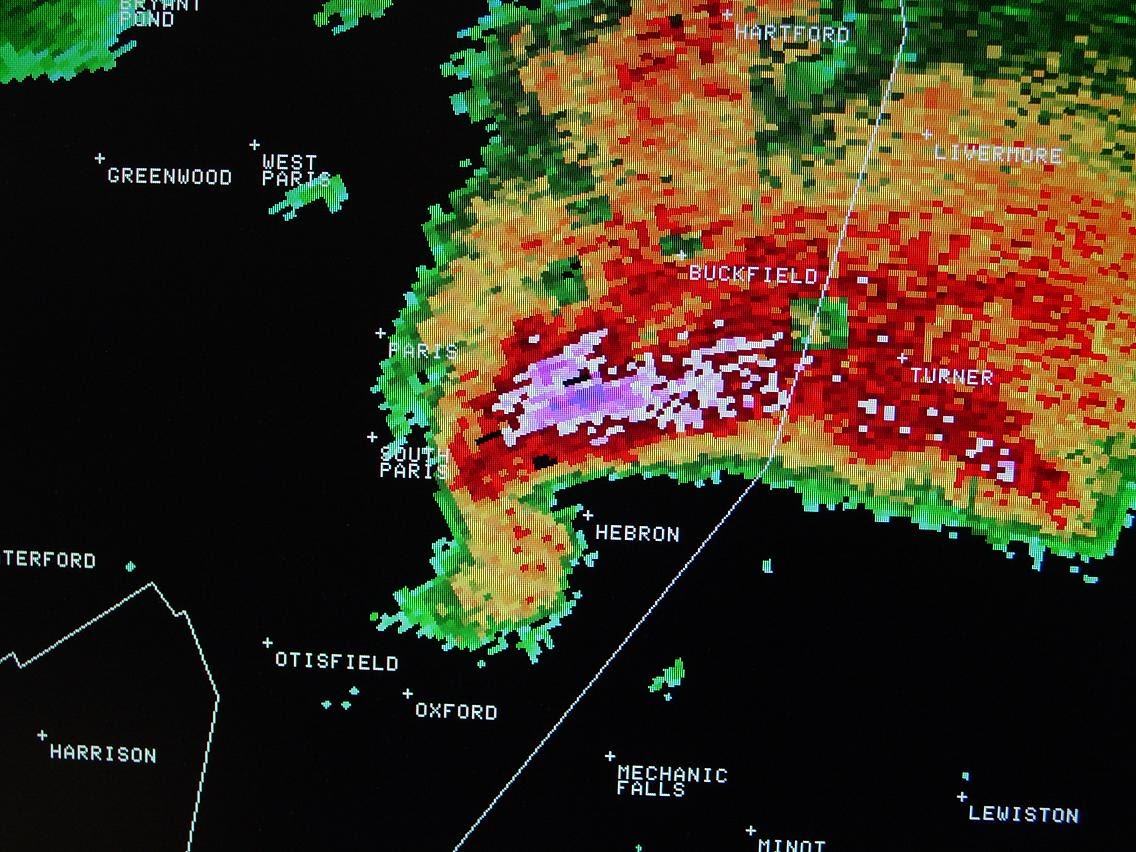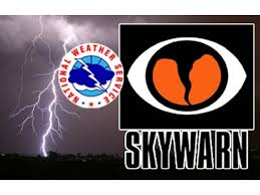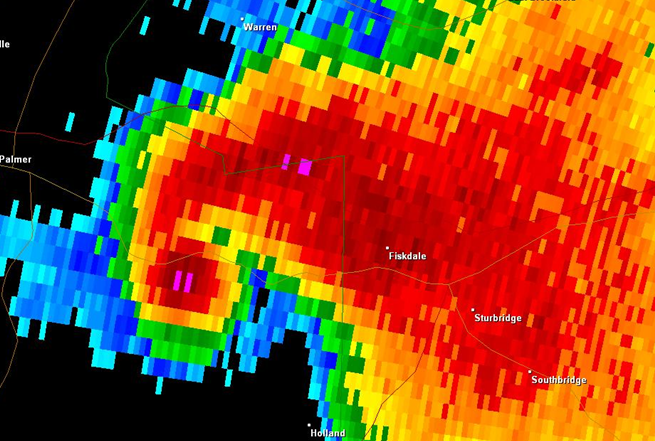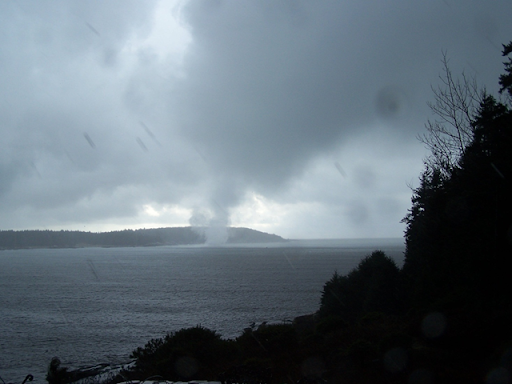|
What is SKYWARN™? |
|
SKYWARN™ storm spotters are part of the ranks of citizens who form the Nation's first line of defense against hazardous weather. There can be no finer reward than to know that their efforts have given communities the precious gift of time--seconds and minutes that can help save lives. While the main role of a storm spotter is to be their community's first line of defense against dangerous storms, they also provide important information to NWS warning forecasters who make critical warning decisions. Storm spotters play a critical role because they can see things that radar and other technological tools cannot, and this ground truth is critical in helping the NWS perform our primary mission, to save lives and property. |
  |
Sessions are open to anyone with an interest in becoming a spotter. For those that are under the age of 16, an adult sponsor is required.
| County: | City | Date | Time | Location | Registration |
|---|---|---|---|---|---|
| Basic SKYWARN Severe Weather Spotter | |||||
| Virtual | Virtual | Nov 17th | 6-7:30 PM | Virtual | https://attendee.gotowebinar.com/register/8841543985110273368 |
| Virtual | Virtual | Nov 25th | 6-7:30 PM | Virtual | https://attendee.gotowebinar.com/register/2318394385189804381 |
| Coastal Flood SKYWARN Weather Spotter | |||||
| Virtual | Virtual | Nov 12th | 6-7:30 PM | Virtual | https://attendee.gotowebinar.com/register/2883134343542507614 |
| Forecasters from the National Weather Service (NWS) in Gray conduct storm spotter training sessions each year to help prepare spotters for the upcoming severe weather season. These sessions are free and open to anyone who is interested in learning about hazardous weather and the role of a spotter. There are some eligibility requirements to be a spotter: You must be able to observe the weather, be 16 years or older and be able to access a phone or website send in reports or be able to report information through the Amateur Radio Network. Our live training sessions are approximately 1.5 hours in length, and once you complete the training, you will be an official SKYWARN™ spotter and given a spotter ID. This goal of the training is to train spotters to assist local officials and the NWS with early detection of hazardous weather, and provide ground truth during severe weather events. The learning objectives of our live training sessions are:
|
 |
 |
SKYWARN™ volunteers also help the NWS by reporting winter weather, flash flooding, coastal flooding, etc., according to the established criteria. It must be stressed that we are looking for reliable and objective reports. When snowfall reports are inflated or hail sizes are exaggerated, for example, it can do more harm than good. While not a requirement, it is preferred that our SKYWARN™ volunteers would be available to receive a call from the NWS, in the event we feel that something suspicious is happening in their area. A questionnaire form handed out at the training sessions allows one to give additional information, such as hours of availability, access to rivers/streams, type of weather equipment owned (if applicable), etc. Training sessions are held throughout northern New England, typically in the late spring and early summer months. The latest training dates can be found on the Training Schedule tab just above. One can also find announcements on our website or on social media. |
In addition, spotter reports are an integral part of our verification program and our national stormdata database for damaging weather events.
For your reports to be the most useful, they should be as detailed, concise, accurate and timely as possible. Your severe weather report should address the following questions:HOW TO REPORT:
Any other details that are important - How long did it last? Direction of travel? Was there damage? etc. |
 |
| Weather Event | Report Criteria | What Specifically to Report |
|---|---|---|
| TORNADO | Always Report | Persistent rotation, movement direction, visible debris or damage path |
| FUNNEL CLOUD | Always Report | Persistent rotation, movement direction, placement within the storm |
| WALL CLOUD | Wall Cloud | Persistent rotation, movement direction, placement within the storm |
| HAIL | Pea-size or larger | Report the largest size hailstone |
| WIND GUSTS | > 45 mph | Specify estimate or measurement |
| HEAVY RAIN | Rainfall >1" per/hr | How much, how quick, what you measured with |
| FLASH FLOODING | Always Report | Flooding of roads & structures, rivers outside their banks |
| STORM DAMAGE | Damage to structures (roof, siding, windows, etc) Damage to vehicles (from hail and/or wind) Trees or large limbs snapped/uprooted Power/telephone poles and/or lines down Road damage due to flooding |
| Hail Type | Hail Size |
|---|---|
| Pea | 0.25 inch |
| Half-inch | 0.50 inch |
| Dime | 0.75 inch |
| Nickel | 0.88 inch |
| Quarter | 1.00 inch |
| Half Dollar | 1.25 inch |
| Ping Pong Ball | 1.50 inch |
| Golf Ball | 1.75 inch |
| Hen Egg | 2.00 inch |
| Tennis Ball | 2.50 inch |
| Baseball | 2.75 inch |
| Tea Cup | 3.00 inch |
| Grapefruit | 4.00 inch |
| Softball | 4.50 inch |
| Wind Speed | Typically Observed Damage |
|---|---|
| 30-44 mph (26-39 kt) | Whole trees in motion. Inconvenient walking into the wind. Light-weight loose objects (e.g., lawn furniture) tossed or toppled. |
| 45-57 mph (39-49 kt) | Hardwood tree twigs and branches snap; some weakened soft trees snap or uproot. Old/weak structures (e.g., sheds, barns) may sustain minor damage (roof, doors). Buildings partially under construction may be damaged. A few loose shingles removed from houses. |
| 58-74 mph (50-64 kt) | Large limbs break of hardwood trees; shallow rooted trees pushed over. Soft wood trees snap and uproot. Semi-trucks overturned. More significant damage to old/weak structures. Shingles, awnings removed from houses; damage to chimneys and antennas. |
| 75-89 mph (65-77 kt) | Widespread damage to trees with large limbs down or trees broken/uprooted. Mobile homes may be pushed off foundation or overturned. Roof may be partially peeled off industrial/commercial/ warehouse buildings. Some minor roof damage to homes. Weak structures (e.g., farm buildings, airplane hangars) may be severely damaged. |
| 90+ mph (78+ kt) | Widespread areas of uprooted and snapped trees. Mobile homes damaged. Roofs partially peeled off homes and buildings. Moving automobiles pushed off the road. Barns, sheds demolished. |
| Weather Event | Criteria |
|---|---|
| Winter Weather |
|
| Coastal Flooding |
|
| River Flooding |
|
| Snowfall |
|
| Freezing Rain |
|
| Sleet |
|
Below are few resources hosted locally at the National Weather Service in Gray, ME, as well as National and Amateur Radio resources concerning SKYWARN™.
General Address and Phone Number
National Weather Service
PO Box 1208
1 Weather Lane
Gray, ME 04103
(207)-688-3216
For more information on the local NWS Gray SKYWARN Amateur Radio Team including how to join please click here.
| Winter Weather Observing Quick Guide | Coastal Flooding Observer Quick Guide |